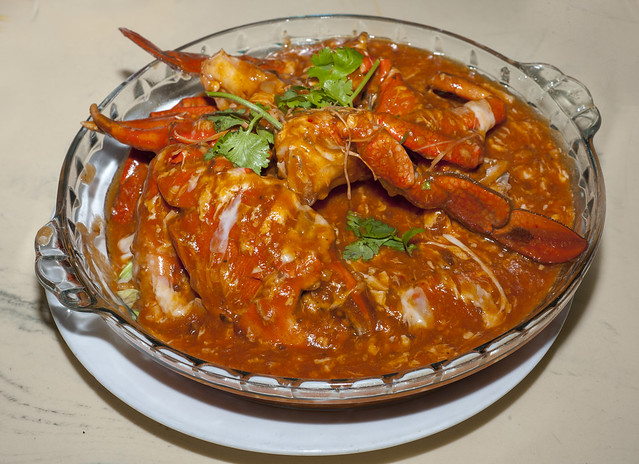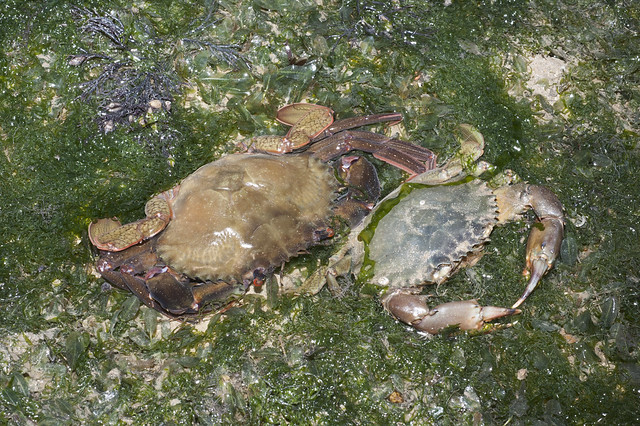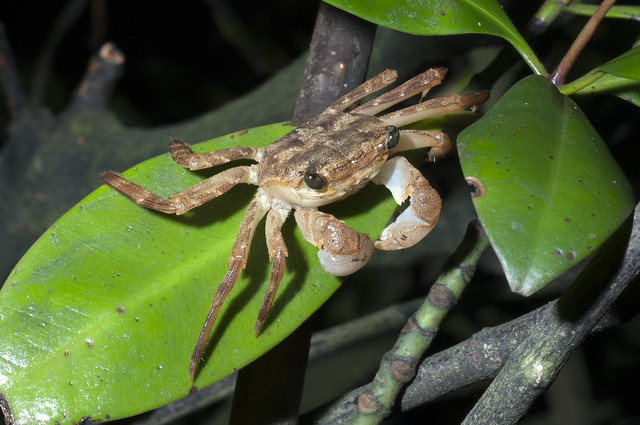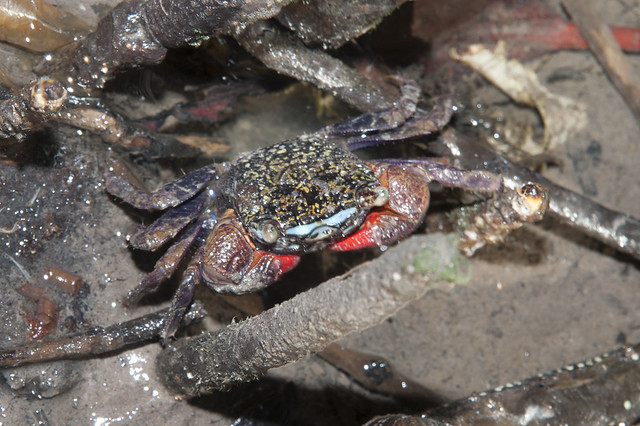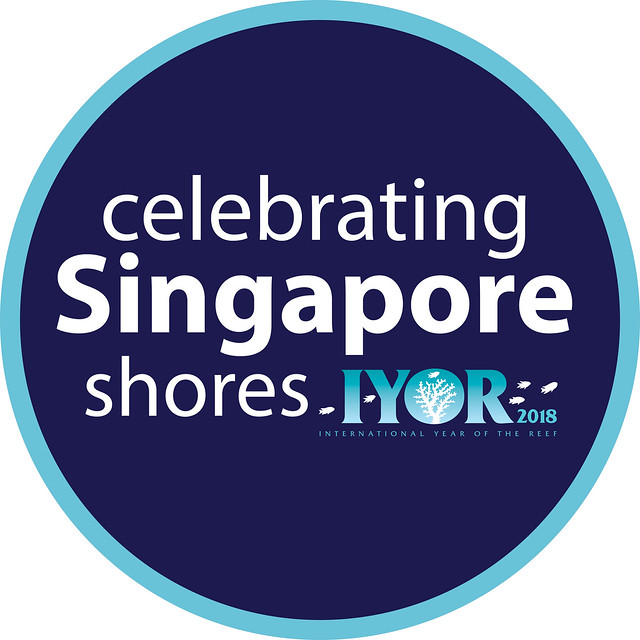There are also many other cool crabs in our mangrove forests. Here's more about them.
At Pulau Ubin, you can still eat chilli crabs made from crabs caught freshly from the mangroves there. The friendly Crab Man is always glad to share how he catches them. He has been featured many times including in this video by Today: "Every day, Mr Quek Kim Kiang, informally known as Ah Kiang, traverses deep into the heart of dense mangrove forests, in search of crustaceans. Using a traditional hooking method, he pries these crabs out of holes and sells them for S$25 a kilogramme. "
The trees are full of crabs!
Resembling origami crabs, Tree climbing crabs have a body that is flat and squarish, and legs that are flat with pointed tips. At high tide during the day, some cling to tree trunks just above the water line. Here they remain motionless. They probably do this to avoid both aquatic predators in the water, as well as airborne predators such as birds. These crabs eat mainly leaves, gathering these at night from the ground or by climbing up trees. These crabs have been observed as high as 6m up in trees.
The Teochew pickle these crabs in black sauce with vinegar and eat them with porridge. The Thais eat them salted with the roe or fried whole. They are considered pests in mangrove plantations because they attack mangrove seedlings.
The Mangrove tree-dwelling crab is small and usually only seen at night, in mangrove trees among the leaves. It is distinguished by its greenish eyes.
More mangrove crabs
The Face-banded sesarmine crab has a bright, irridescent green or blue band across the face, with deep red pincers. The rest of the body is usually well camouflaged. They are usually found on the forest floor. A study of these two species found that males of both species had more intense blue facial bands, whereas green was more pronounced in female facial bands.
The Mound crab is rather spherical crab and seldom seen outside the Mud lobster mounds where it lives. It is listed as 'Endangered' in the Red List of threatened animals of Singapore.
These crabs can only live in mangroves. Where they happily convert fallen leaves, and dead plants and animals into delicious crab! So let's protect our mangroves so that we can continue to enjoy these crabs.
Where can I see mangrove crabs?
The common ones are easy to spot from the mangrove boardwalks at Sungei Buloh Wetland Reserve, and at Chek Jawa, Pulau Ubin. The Pasir Ris mangrove boardwalk is open at night and gives you a great opportunity to observe crabs and other animals that are more active in the dark. Click on the links to the NParks website for the latest walks and activities at these locations.
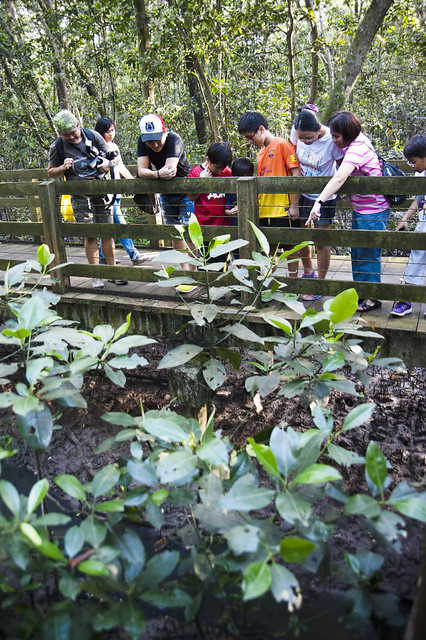 |
| Exploring the Pasir Ris mangrove boardwalk. |
Links to more information
- Crabs of Singapore shores on the wild facts sheets.
This article is written for Celebrating Singapore Shores as part of International Year of the Reef 2018.

